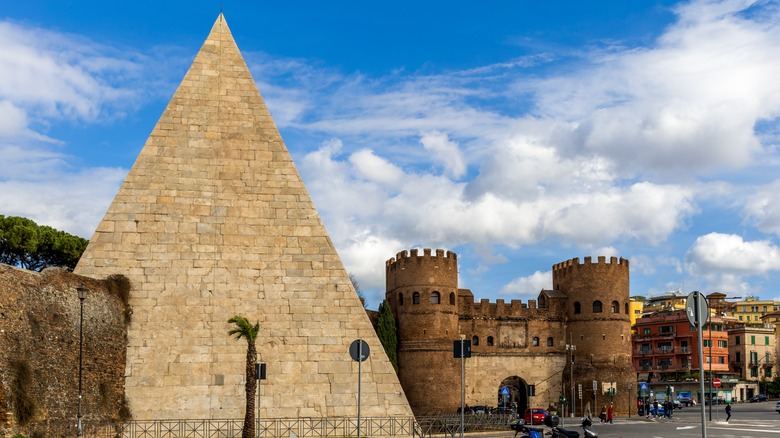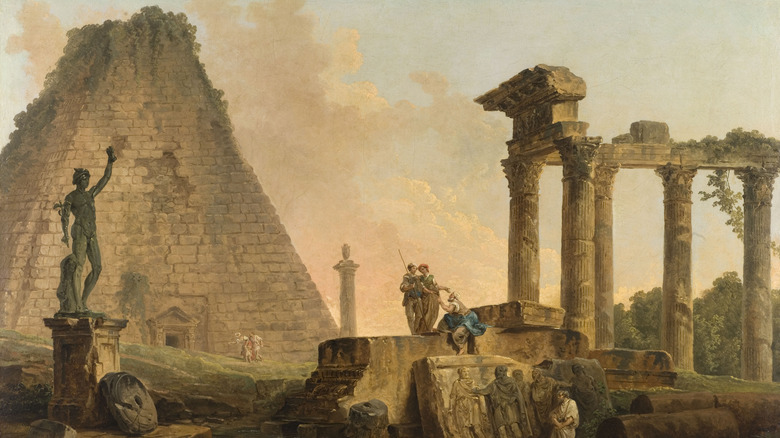Rome's Underrated Ancient Pyramid Is Worth Finding, According To Rick Steves
Perhaps no other city in the world offers a hodgepodge of history like Rome, Italy. Nearly every age is represented, going back to the Mamertine prison built by King Anco Marzio in the seventh century B.C. Rome's historical importance also ensured that the buildings erected often represented the apogee of technology, be it the Colosseum — free one day per month – St. Peter's Basilica, Palazzo Barberini, or Vittoriano. This creates an architectural and archaeological tapestry that contrasts sharply with the more uniform design and structure of cities like Florence, Venice, and Bologna. So, it should come as no surprise to anyone, including travel icon Rick Steves, that Rome also contains the seemingly random Pyramid of Cestius.
Even for Rome, it's striking and strange. That's why Rick Steves put it on his list, Offbeat Europe, writing, "You don't need to go to Egypt to see an ancient pyramid." Today, the 120-foot-tall, steep, marble-covered cone sits in the southern skirt of Rome's Aurelian Walls, next to the Porta San Paolo in the Ostiense quarter. The pyramid is actually part of the wall itself, transformed into a bastion to help defend against attacks about 300 years after its construction. Indeed, the walls link to the two sides of the pyramid, like a necklace chain and pendant. After it was sealed off, the mausoleum took almost two millennia more before opening to the public in 2016, having undergone major renovations.
Who was Cestius and why did he build a pyramid?
During the reign of Augustus, Egypt was all the rage. The first was the more literal type, as Mark Antony and Cleopatra famously battled Augustus for supremacy — and lost. The next type substituted war fury for Pharaonic furor, "after the Cleopatra and Mark Antony scandal brought exotic Egyptian styles into vogue," as Steves writes. Once conquered, Egypt began sending grain and goods to Rome, along with totems of triumph, including the obelisks still standing in the city. Caius Cestius lived during these events, serving as a praetor, tribune, magistrate, and priest. Before his death, he hopped firmly on the Egypt bandwagon and ordered his heirs to build this pyramid mausoleum in 330 days or lose their inheritance.
The remains of Cestius are long gone, along with grave goods, most likely stolen during the Middle Ages. But visitors today still get a treat, in the architecture of the barrel vault, original inscriptions, and restored frescos. Before leaving, give a hat tip to Japanese fashion mogul, Yuzo Yagi, who donated 2 million euros for the pyramid's restoration. Tourists can also pay it forward with some treats for the cats in the large sanctuary on the grounds of the mausoleum. It might also inspire a visit to Rome's most famous cat sanctuary, Torre Argentina. But to be sure, checking out this Egyptian anomaly is just one addition to a long list of things you should do in Rome.

